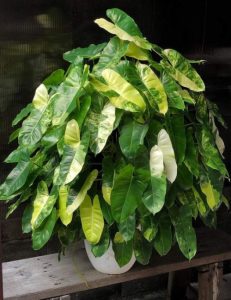- English
- Chinese
- French
- German
- Portuguese
- Spanish
- Russian
- Japanese
- Korean
- Arabic
- Irish
- Greek
- Turkish
- Italian
- Danish
- Romanian
- Indonesian
- Czech
- Afrikaans
- Swedish
- Polish
- Basque
- Catalan
- Esperanto
- Hindi
- Lao
- Albanian
- Amharic
- Armenian
- Azerbaijani
- Belarusian
- Bengali
- Bosnian
- Bulgarian
- Cebuano
- Chichewa
- Corsican
- Croatian
- Dutch
- Estonian
- Filipino
- Finnish
- Frisian
- Galician
- Georgian
- Gujarati
- Haitian
- Hausa
- Hawaiian
- Hebrew
- Hmong
- Hungarian
- Icelandic
- Igbo
- Javanese
- Kannada
- Kazakh
- Khmer
- Kurdish
- Kyrgyz
- Latin
- Latvian
- Lithuanian
- Luxembou..
- Macedonian
- Malagasy
- Malay
- Malayalam
- Maltese
- Maori
- Marathi
- Mongolian
- Burmese
- Nepali
- Norwegian
- Pashto
- Persian
- Punjabi
- Serbian
- Sesotho
- Slovak
- Slovenian
- Somali
- Samoan
- Scots Gaelic
- Shona
- Sindhi
- Sundanese
- Swahili
- Tajik
- Tamil
- Telugu
- Thai
- Ukrainian
- Urdu
- Uzbek
- Vietnamese
- Welsh
- Xhosa
- Yiddish
- Yoruba
- Zulu
- Kinyarwanda
- Tatar
- Oriya
- Turkmen
- Uyghur

පැලෑටි උද්යෝගිමත් අය Filldendron for its beautiful growth stance and spherical leaves. Philodendron, an indoor foliage plant, has water needs that take front stage in plant care. Knowing Philodendron’s water needs can help gardeners keep the plant in good shape, avoid frequent diseases, and guarantee its decorative appeal.

Filldendron
සරල ෆිලිලෝඩන්ද්රන් ජල අවශ්යතා
ෆ්ලිලෝඩොන්ඩ්හි ජලය විශේෂයෙන් සොයයි. ජලය ගොඩනඟා නොගැනීම, කෙසේ වෙතත් එය පස තෙත් කළ යුතුය. අධික හෝ ඕනෑවට වඩා අඩු ප්රමාණයක් ශාකයට අහිතකර ලෙස බලපාන අතර, නිවැරදි ජලය දැමීමේ තාක්ෂණය ෆ්ලිලෝඩොන්රන්ගේ යහපත් දියුණුව දිරිමත් කරයි. ෆිලිලෝඩන්ද්රන් ගැන හොඳ සැලකිල්ලක් රඳා පවතින්නේ එහි මූලික ජලජීවී අවශ්යතා දැන ගැනීම මත ය.
The Philodendron soil first of all must be maintained somewhat wet. Water should ideally be applied when the soil’s surface is dry. While inadequate water may cause the leaves of the plant to dry out and the margins to become yellow, enough water may cause water collection at the roots, resulting in root rot and plant diseases. Consequently, it is important to perfect the suitable watering schedule and technique.
ජලය දැමීමේ කාලසටහන සහ සංඛ්යාතය
Many factors influence the frequency of watering, including ambient circumstances, seasonal variations, and plant development stage. While in autumn and winter the plant’s growth rate slows down and the frequency of watering has to be lowered, generally Philodendron needs more frequent watering during the peak growth season in spring and summer.
Philodendron grows quicker in spring and summer, and soil moisture is utilized faster as well. Right now, you should water once a week and change it in time based on soil dryness. One good approach to find if watering is required is to check the surface of the soil’s moisture level. Watering may be done two to three centimeters deep, on the surface of the soil.
Philodendron’s growth rate slows down and water need also declines in fall and winter. Usually once every two weeks, the frequency of watering may be decreased during this period. In cold areas, the transpiration of plants is lowered and the moisture in the soil is kept longer, therefore limiting watering may help to avoid root issues resulting from too high soil moisture.
ජලය දැමීමේ තාක්ෂණය
ෆිලිලෝඩන්ද්රන්ගේ සෞඛ්ය සම්පන්න දියුණුව නිවැරදි ජලය දැමීමේ තාක්ෂණය මත රඳා පවතී. පහත දැක්වෙන්නේ කාර්යක්ෂම ජලය දැමීමේ ක්රම කිහිපයක්:
භූමිය සමානව ආවරණය කළ හැකි දේ අනුව ජලය දැමීම කළ යුතුය. එක් කලාපයක ජලය අවධානය යොමු කිරීමෙන් පැහැදිලි වන්න, මෙය වෙනත් ප්රදේශවල වියළි පසට හා මූල ප්රදේශයේ ජලය අධික ලෙස ජලය ගෙන යා හැකිය. ජලය දැමීම භාවිතා කිරීමෙන් භූගත මතුපිටට වඩා ජලය පෘෂ් on ය මත ජලය සාධාරණ ලෙස බෙදා හැරීමට ඔබට උපකාරී වේ. එවිට පසෙහි මුළු ස්ථරය තෙත් වේ.
ෆිලෝඩන්ද්රන් පෙරට යන්නේ මුල්වල ජලය ගොඩනැගීමට නොව, ජලය දැමීමේදී ජලාපවහනය කෙරෙහි දැඩි අවධානයක් යොමු කරන්න. ප්රමාණවත් ජලාපවකු සමඟ පස තෝරන්න, ඉන්පසු ප්රමාණවත් ජලාපවහන කුහර සඳහා මල් පිපියේ පතුල පරීක්ෂා කරන්න. ජලය දැමීමෙන් පසු චැසිවල ජලය සමුච්චය වී ඇත්දැයි පරීක්ෂා කරන්න; ඉන්පසු එකතු කරන ලද ජලය පොඟවා ගැනීම වැළැක්වීම සඳහා එකතු කරන ලද ජලය ක්රමයෙන් හිස් කරයි.
ජලය කාමර උෂ්ණත්වය විය යුතුය; මෙය ශාකයේ සීතල හෝ උණු වතුරෙන් හානියක් කිරීම වැළැක්වීමට මෙය උපකාරී වේ. ශාකයේ මූලයන් සීතල හෝ උණු වතුරේ දුක් විඳින අතර දුර්වල සංවර්ධනය හෝ හානියක් සිදුවිය හැකිය. කාමර උෂ්ණත්වයට සමාන ජල උෂ්ණත්වයක් පවත්වා ගැනීම ෆ්ලිලෙන්ඩන්ට වඩා හොඳින් අවශෝෂණය කර ගැනීමට උපකාරී වේ.
පාංශු තෙතමනය සංවර්ධනය කිරීම
වාරිමාර්ග නිවැරදි කිරීමේ රහස වන්නේ පාංශු තෙතමනය පිළිබඳ දැනුමයි. මේවා පාංශු තෙතමනය හඳුනාගැනීමේ කාර්යක්ෂම ක්රම කිහිපයක්:
ඔබේ ඇඟිල්ල සෙන්ටිමීටර 2-3 ක් බිමට දමන්න. පස වියළී යන බවක් තිබියදී ඔබ එයට වතුර දැමිය යුතුය. භූමිය තවමත් තෙත් විය යුතු නම්, ජලය දැමීමට පෙර ඔබ බලා සිටිය යුතුය. මෙම පහසු සහ ප්රයෝජනවත් ප්රවේශය පසෙහි වියළි බව හඳුනා ගැනීමට උපකාරී වේ.
පාංශු තෙතමනය මීටරයක් යනු පසෙහි තෙතමනය අන්තර්ගතය හරියටම තක්සේරු කිරීමට හැකි වන වඩාත් නිවැරදි හඳුනාගැනීමේ මෙවලමකි. තෙතමනය මීටරය බිමට දැමීමෙන් පසු, කියවීම අනුව පෘථිවියේ තෙතමනය අගය කරන්න. මිනිස් වැරැද්ද අඩු කිරීම සහ ජලය දැමීම සඳහා වඩාත් ස්ථාවර පදනමක්, තෙතමනය මීටරය විය හැකිය
සාමාන්ය ජලය දැමීම සහ නිවැරදි කිරීම
ඔබ ෆිලිලෝඩොන්ඩ්රොන් තබා ගන්නා විට, ඔබට යම් යම් සාමාන්ය ජල කාරණා ඇති විය හැකිය. පහත දැක්වෙන්නේ සාමාන්ය ගැටළු සහ විසඳුම්:
Usually, root rot results from too much water making the ground waterloggy. Reducing the frequency of watering and verifying the soil’s drainage will help to solve this problem. Should root rot be discovered, the plant should be taken out of the container gradually; the rotting roots should be clipped out and replaced in a fresh well-drained soil.
Usually lacking enough water causes leaf dryness. The answer to this is to guarantee that the soil is constantly somewhat wet and boost watering frequency. Moreover, spraying water mist will raise the air’s humidity, thus helping to alleviate leaf dryness’s condition.
Either inadequate soil drainage or overwatering might lead to leaf yellowing. Examine the soil’s wetness and drainage; change the watering frequency; make sure the ground is not too damp. Should the yellowing issue be severe, you might want to think about altering the soil and see if pests and illnesses influence the plant.

Filldendron
නිසි සංවර්ධනය ෆිලිලෝඩන්ද්රන් depends much on its water requirements. Good maintenance starts with knowing its fundamental watering needs—including the suitable frequency, technique, and soil moisture detecting tool. Learning the right watering methods will help you avoid typical water issues and guarantee that Philodendron keeps the optimal development condition in the indoor surroundings. Philodendron’s health and esthetic impact will be better if one routinely checks the state of the plant and modifies the watering schedule to fit the variations in various seasons and environmental circumstances.
Previous News
ෆිලෝඩොන්ඩ් සඳහා හොඳම වර්ධනය වන පරිසරයNext News
ෆිලිලෝඩොන්ඩ්රොන් මැහුම් සමඟ කටයුතු කිරීම


